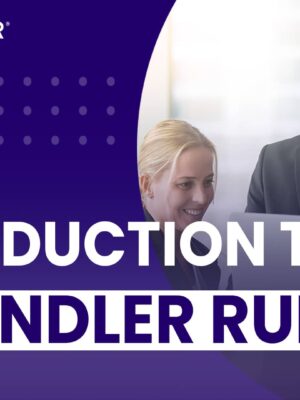Three Tips for Managing Client Relationships

Have you ever had the experience of landing a major client, someone who you thought would stay with you and your organization for the long term – and then, without warning, losing that important piece of business to the competition?
And then having to ask yourself, “What just happened?”
If you have, you’re not alone. This pattern plays out all too often; it’s a symptom of a poorly managed client relationship. There’s no excuse for being blindsided like this in an important account — and you can’t blame the buyer!
The good news is that there are three steps you can take once you’ve secured the account to manage that relationship more effectively … identify trouble spots before they become crises … and protect that hard-won business. They are outlined below.
Step one: Schedule a meeting where you can get the new customer’s help in completing a brief launch document. As the relationship with the client begins, you will schedule face time with your main contact, your key people, and his or her key people — all with the aim of getting clear feedback on the client’s most important priorities over the next 90 days. Your aim during this meeting is to get your client to talk specifically to you and your team about his side’s motivations, needs, and pains; to create measurable performance benchmarks; and to get all this down in writing that both sides agree on. The resulting launch document will identify between three and five clear, measurable priorities that you are willing to be held accountable for fulfilling over the next three months. This critical document positions your entire team to deliver successfully on the client’s terms … and helps you earn the right to sell more over time.
At Sandler, we’ve created a special tool that can help you drive this launch meeting: The Client-Centric Satisfaction Tool. (It’s part of the Sandler Enterprise Selling program.) This tool helps you establish a client-specific list of weighted priorities that will drive your work for this specific client over the next 90 days. Those priorities are going to be required reading for your delivery team.
Whether or not you use this tool, though, you can set up a written summary of client-defined priorities that go far deeper than the one-size-fits-all surveys most organizations send out. These surveys typically focus on a bland list of pre-selected criteria; they deliver little in terms of meaningful information. Far more preferable is the goal of integrating customer-specific client satisfaction benchmarks into the overall relationship … by asking the client to establish the measurement criteria by which the relationship will be judged as you move forward. Let the client define success!
Note that both you and your delivery team should be at this meeting with the client, so that everyone is on the same page!
Step two: During this initial launch meeting, arrange for senior executive participation going forward. The presence and engagement of senior executives from both sides is critical in managing and protecting the client relationship. Do not feel shy about asking for that engagement from both the client side and from your side. In a key business partnership, the commitment of executive involvement on a quarterly basis is not too much to ask. When it’s clear that the focus of the discussions is on measurable client value that has actually delivered, executives will make time.
Raise this topic during your launch meeting … and then keep coming back to it over time as necessary. A significant executive presence from both sides breeds accountability, streamlines decision making and sets the stage for high-level personal relationships.
Step three: Schedule and hold Quarterly Value Review (QVR) meetings to review the numbers. These sessions must be scheduled and held consistently, and a quarterly schedule should be your starting point. A 90-day window between sessions typically provides the right amount of time for valid measurement of performance and implementation of actions, so every effort should be made to keep to the quarterly frequency for these critical sessions, at least at first.
While the importance of some partnerships might necessitate half day or longer QVRs, a reasonable timeframe for the vast majority of these discussions is ninety minutes. This duration is respectful of executive calendars and it also presents a great opportunity for scheduling the sessions over lunch or dinner, which can make it easier to engage with senior executives.
The whole point of the QVR is that, unlike the typical quarterly business review, which is typically just a small-scale trade show, it’s not about you. Rather, it’s all about how the client defines and quantifies the value you’ve already delivered… and what the client needs to see from you next.
We’ve created a special QVR tool that gives you a high-level forum to show key people exactly how you’ve measured up in the real world – the client’s world. This form gives you a pattern of continuous, scheduled discussions about exactly what form your value needs to take over the next 90 days (or whatever timing for your meetings the client prefers).
Fortunately, C-level people at the client organization want to be at this meeting… because value is what they’re expected to deliver to shareholders and stakeholders!
Follow the Steps!
If you follow these three simple steps, you will identify what’s truly important to the client, keep your own team focused on the right priorities, and strengthen your relationship over time. For more information on our Quarterly Value Review and Client-Centric Satisfaction tools, visit us here.








